Anthropology
Related: About this forumThe World's Largest Pyramid Site Isn't in Egypt and It's Twice the Size.
By
Adnan Rasheed
Published 14 days ago • 4 min read

When people think of pyramids their minds often jump to Egypt’s grand structures such as the Great Pyramid of Giza or the towering monuments of the pharaohs. However what many don’t realize is that the world's largest collection of pyramids isn’t in Egypt at all. Instead it lies hidden in the vast deserts of Sudan. The ancient Kingdom of Kush a powerful civilization that once rivaled Egypt built more than twice as many pyramids as their northern neighbors. Yet despite their historical significance these pyramids remain relatively unknown to the world.
The Lost Kingdom of Kush
The Kingdom of Kush centered in modern day Sudan flourished for over a thousand years from around 1070 BCE to 350 CE. It was a powerful civilization with deep cultural economic and political ties to Egypt. At times the Kushites even ruled over Egypt forming the 25th Dynasty of pharaohs known as the Black Pharaohs. Despite their influence the Kushites developed their own distinct identity and their architectural achievements including their pyramids stand as a testament to their greatness. Unlike Egyptian pyramids which are massive and widely spaced the pyramids of Kush are smaller steeper and more numerous. Over 200 pyramids have been discovered in Sudan primarily in three major sites Meroë Nuri and El Kurru. These structures were used as royal tombs for Kushite kings queens and high ranking officials reflecting the civilization’s beliefs in the afterlife and its reverence for its rulers.
Meroë: The Largest Pyramid Field
The most famous of Sudan’s pyramid sites is Meroë which served as the capital of the Kingdom of Kush from around 300 BCE to 350 CE. Located approximately 150 miles north of Sudan’s capital Khartoum Meroë is home to over 50 pyramids clustered in a relatively small area. These pyramids are made of sandstone and brick and while they are much smaller than those in Giza their sheer number makes them extraordinary.
Meroë was a thriving trade hub connecting Africa with Egypt and the Mediterranean world. The Kushites controlled vital trade routes, exporting gold ivory ebony and exotic animals. This wealth enabled them to construct the impressive pyramids that still stand today. The Meroitic pyramids were influenced by Egyptian styles but had unique features, such as narrow bases sharp angles and decorative elements that showcased a blend of African and Egyptian artistry.
Nuri and El-Kurru Burial Grounds of Kushite Kings
Another significant pyramid site in Sudan is Nuri, where many of the Kushite kings including the great Pharaoh Taharqa were buried. Taharqa was one of the most powerful rulers of the 25th Dynasty of Egypt and his pyramid at Nuri is one of the largest in Sudan. The pyramids at Nuri differ from those at Meroë because they are older and have suffered more damage over time yet they still hold immense historical importance. El Kurru is another ancient Kushite burial site dating back to the early days of the kingdom. Some of the earliest Kushite rulers were buried here including King Piye the founder of the 25th Dynasty in Egypt. The tombs at El Kurru contain intricate wall paintings and hieroglyphic inscriptions revealing the spiritual and cultural beliefs of the Kushites.
More:
https://vocal.media/history/the-world-s-largest-pyramid-site-isn-t-in-egypt-and-it-s-twice-the-size
magicarpet
(18,456 posts)Thank you for sharing.
Judi Lynn
(163,980 posts)Story by Arezki Amiri • 2mo • 4 min read

The World’s Largest Collection of Pyramids Isn’t in Egypt—And It’s Twice the Size
© Daily Galaxy
When you think of pyramids, your mind probably jumps to Egypt’s Great Pyramid of Giza. But did you know that the world’s largest collection of pyramids isn’t found in Egypt at all? Just south of the famous Nile Valley lies Sudan, home to a staggering 220 to 255 pyramids—more than double the number in Egypt. Built by the ancient Kingdom of Kush, these overlooked monuments tell the story of a powerful African empire that rivaled its northern neighbor in grandeur, influence, and mystery.
A Kingdom of Pyramid Builders
Sudan’s pyramids are the legacy of the Kingdom of Kush, an ancient superpower that flourished between 800 BCE and 350 CE in Nubia, a region spanning southern Egypt and northern Sudan. The Kushites ruled during a golden age of cultural exchange, even conquering Egypt to establish the 25th dynasty, led by the Black Pharaohs. Among them was Piye, the ambitious ruler who, in 770 BCE, took over Egypt and demanded that his tomb reflect the grandeur of the pharaohs before him.
Inspired by Egypt’s monumental tombs, Piye became the first Kushite to commission a pyramid for himself at El-Kurru, a necropolis near the Nile. This was just the beginning of Sudan’s pyramid-building legacy, which would stretch across centuries and dozens of rulers.
Meroë: The Hidden Jewel of the Desert
As the Kushites retreated from Egypt, they established a new capital at Meroë, near present-day Khartoum. This city became the heart of their civilization and home tonearly 200 pyramids, the largest cluster in the world. Smaller and steeper than their Egyptian counterparts, these pyramids are packed tightly in the desert, their unique pointed shapes making them a striking sight.
More:
https://www.msn.com/en-us/news/world/the-world-s-largest-collection-of-pyramids-isn-t-in-egypt-and-it-s-twice-the-size/ar-AA1wr75y
Judi Lynn
(163,980 posts)
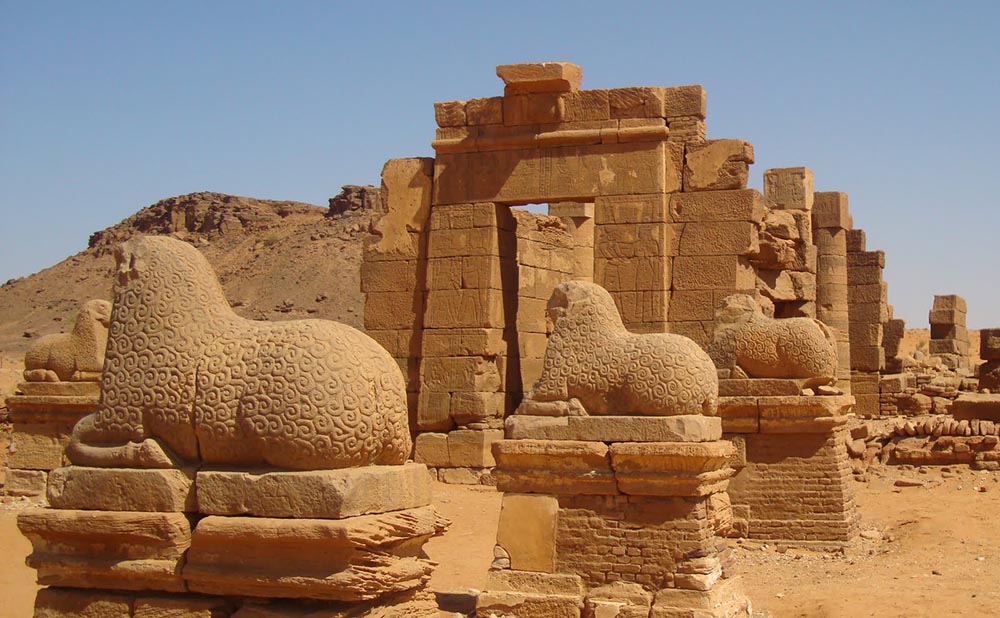
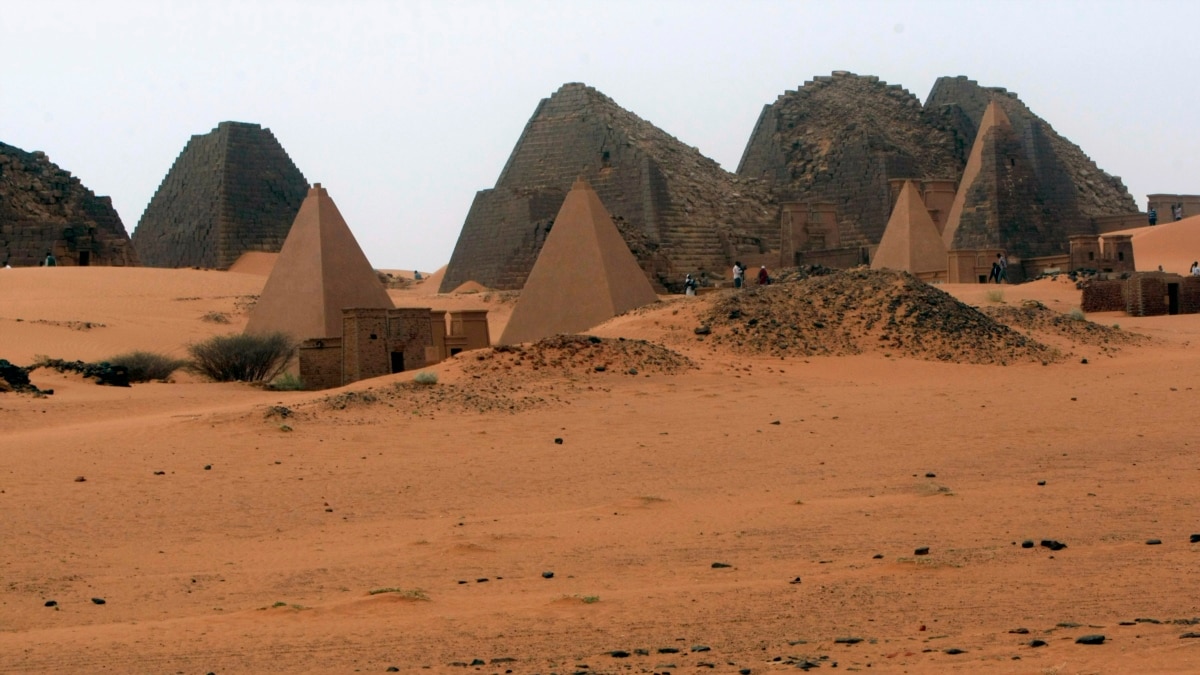
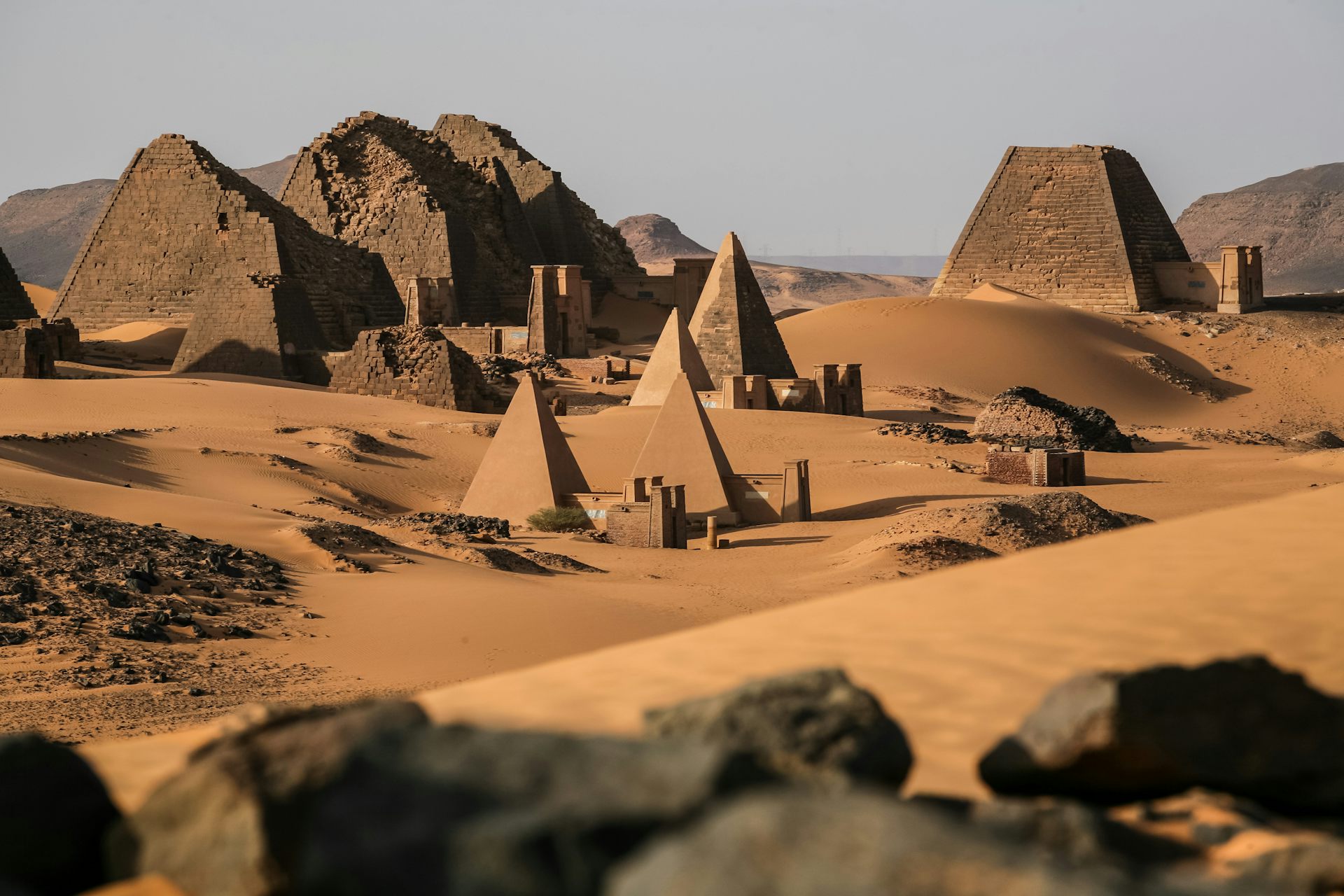
More images:
https://tinyurl.com/2r29h6yv
nubian pyramids inside

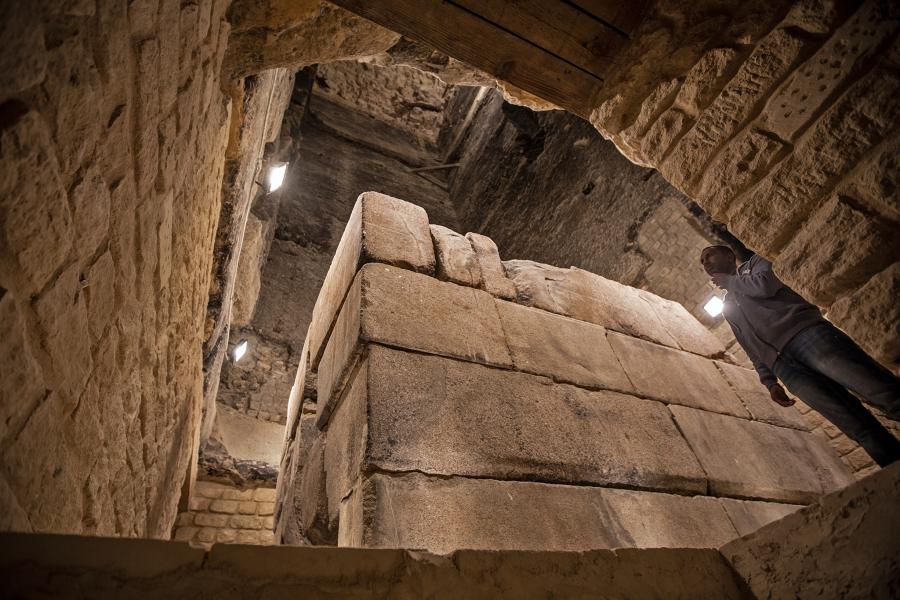


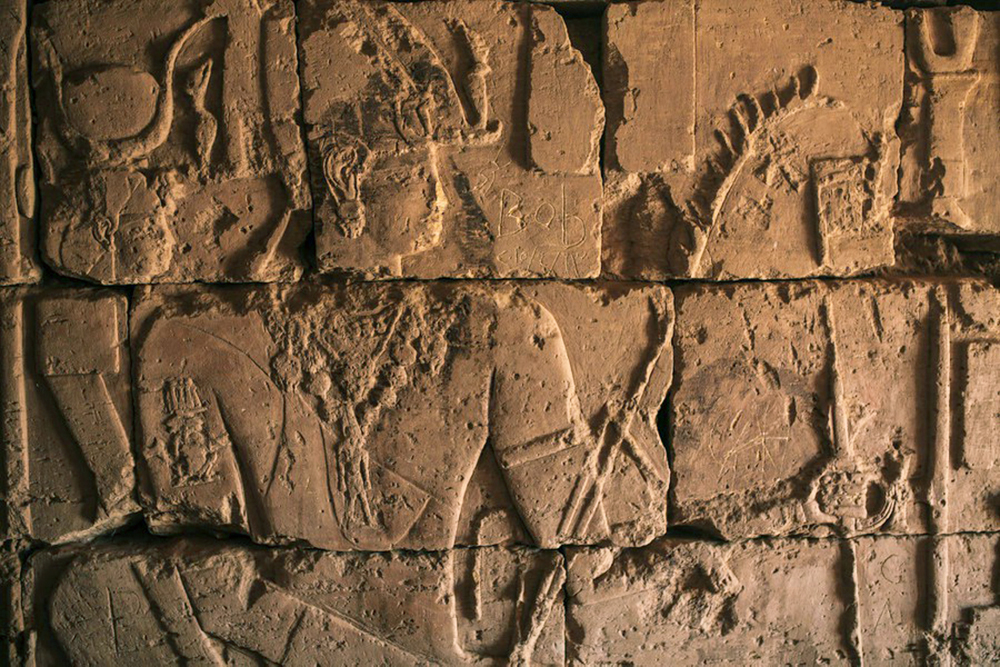
More images:
https://tinyurl.com/2s4h2fbc
Judi Lynn
(163,980 posts)Desecrated by plunderers, threatened by floodwaters and largely overshadowed by their Egyptian counterparts, Sudan’s ancient archaeological sites may finally be poised to receive broader recognition.
Photographs and Text by Alessio Mamo
March 22, 2021, 5:00 a.m. ET
The site was nearly deserted. A few locals were tidying up after recent restoration work, and young camel drivers were out looking for clients. In the midday heat, the bright glow of the desert helped focus my attention on the pyramids themselves.
Situated on the east bank of the Nile, some 150 miles by car northeast of Sudan’s capital, Khartoum, the Meroe pyramids — around 200 in total, many of them in ruins — seemed to be in perfect harmony with the surrounding landscape, as if the wind had smoothed their edges to accommodate them among the dunes.
Throughout the 30-year dictatorship of Omar Hassan al-Bashir, who led Sudan through a long series of wars and famines, the pyramids of Meroe saw few international visitors and remained relatively unknown.
But among the many consequences of the revolution that led to Mr. al-Bashir’s ouster in 2019 — along with the removal of Sudan in 2020 from the United States’ list of state sponsors of terrorism — was the hope that the country’s archaeological sites might receive broader attention and protections, not simply from researchers and international visitors but also from Sudanese citizens themselves.
I traveled to Sudan in February and March of 2020, just a few days before pandemic lockdowns fell into place in my home country of Italy. I was attracted to a nation that had managed — through the strength, creativity and determination of its people — to free itself from a dictatorship. And I was keen to meet and photograph the protagonists and young actors of this historic moment.
More:
https://www.nytimes.com/2021/03/22/travel/sudan-archaeology-meroe.html
Or:
https://www.removepaywall.com/search?url=https://www.nytimes.com/2021/03/22/travel/sudan-archaeology-meroe.html
Deuxcents
(24,376 posts)Are in countries that have unstable governments. Sudan is in the midst of civil war and rival factions could destroy some of these structures. I remember when the Taliban destroyed the Buddhas in Afghanistan..a real tragedy.
Historic NY
(39,357 posts)buy their glifs live on .
BidenRocks
(2,381 posts)Kinda dirty in there. Maybe a pressure washer? ![]()